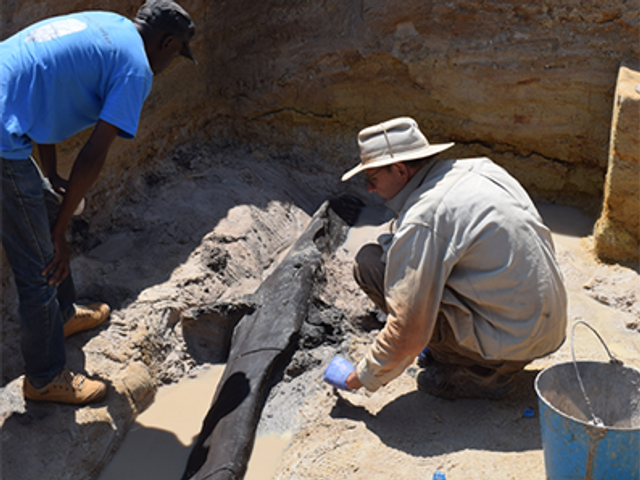When Marcel Duchamp turned a urinal into art just by declaring it so, he steered the history of art on an entirely new, conceptual course. But the lineage of the readymade may stretch back far beyond the French-born artist.
Some three million years ago a humanoid in southern Africa stumbled upon a naturally formed stone in the shape of a head and carried it to a nearby cave. The Makapan Pebble, also known as the Stone of Many Faces, was most likely found by an Australopithecus africanus, an ape-like species with some early human characteristics, which became extinct around two million years ago.
The Makapan (or Makapansgat) Pebble, which has never been displayed, will be exhibited for the first time at the British Museum in London this month in a show entitled South Africa: the Art of a Nation (27 October-26 February 2017). The stone belongs to the Evolutionary Studies Institute at Witwatersrand University in Johannesburg, where it is kept in storage. John Giblin, the British Museum’s co-curator of the show, says the pebble “is the perfect size to hold in the palm of the hand”.
One pebble, three faces The pebble was rediscovered in modern times in a cave in the Makapan Valley, north of Pretoria. In 1925, the cave was excavated by Wilfred Eitzman, a teacher and amateur archaeologist, who also found fossilised Australopithecus africanus bones.
Eitzman showed the pebble to the anthropologist and anatomist Raymond Dart, but it was not until nearly half a century later that Dart realised its significance. In 1974, he published the first paper on the pebble, arguing that it was a naturally-formed object which appears to depict three faces.
One side of the pebble shows what looks like a human skull—with a pair of sunken eyes, a mark for the nose and a mouth with teeth. If the pebble is turned upside down, then another face appears, with features much closer to those of the ape-like Australopithecus africanus. On the reverse, there is a third face with a large grin, and again this is similar to that of an Australopithecus africanus.
The pebble is made of reddish-brown jasperite with quartz veins and it is slightly spherical, with a maximum dimension of 8cm. It was shaped by being worn down by water in a river. Microscopic investigations confirm that it was never modified with tools.
What makes the Makapan Pebble such an exciting discovery is that it was carried to a cave by a living creature. Geologists cannot agree on the distance, but it would have come from a riverbed between 5km and 32km away. It might have been carried to the cave by an animal such as a monkey or an ostrich, says Chris Stringer, a human evolution specialist at the Natural History Museum in London.
But the size of the pebble and the distance from the river makes this unlikely, according to most experts. The consensus is that the pebble must have been brought to the cave by an Australopithecus africanus, whose bones were found nearby. Archaeologists call such an object a manuport—something that has been collected but not used for a utilitarian purpose or modified. Other manuports from around 800,000 years ago and later have been found in southern Africa and India.
Giblin concludes that if an Australopithecus africanus picked up the Makapan Pebble, it probably carried it to the cave “because of its face-like features”. The ability to perceive and appreciate the pattern of a face suggests a degree of self-awareness which would later develop with Homo sapiens.
But is it art? There has been much debate within the British Museum about the pebble. In a press release in July, its exhibition was entitled South Africa: Three Million Years of Art. Later that month a press spokeswoman said the title had been changed to South Africa: the Art of a Nation because of questions over whether the pebble represents art. In the show, the Makapan Pebble will be the first item in the chronological display and the label will encourage visitors to ponder its significance.
John Giblin, from the British Museum, speculates that “the unknown individual who picked up the pebble some three million years ago might be considered one of the world’s first creators of ‘found art’, a practice that is well established among contemporary artists”. Other than found objects such as this, the earliest accepted works of art are sculptures and cave paintings, some dating back around 100,000 years in Africa (and 40,000 years in Europe and Asia).
Robert Bednarik, an Australian prehistorian, describes the Makapan Pebble as palaeoart, but Bernhard Zipfel, the curator of the Evolutionary Studies Institute at Witwatersrand University in Johannesburg, does not believe it should be described as art, although the object’s “artistic characteristics may have been recognised by an early Australopith”.




